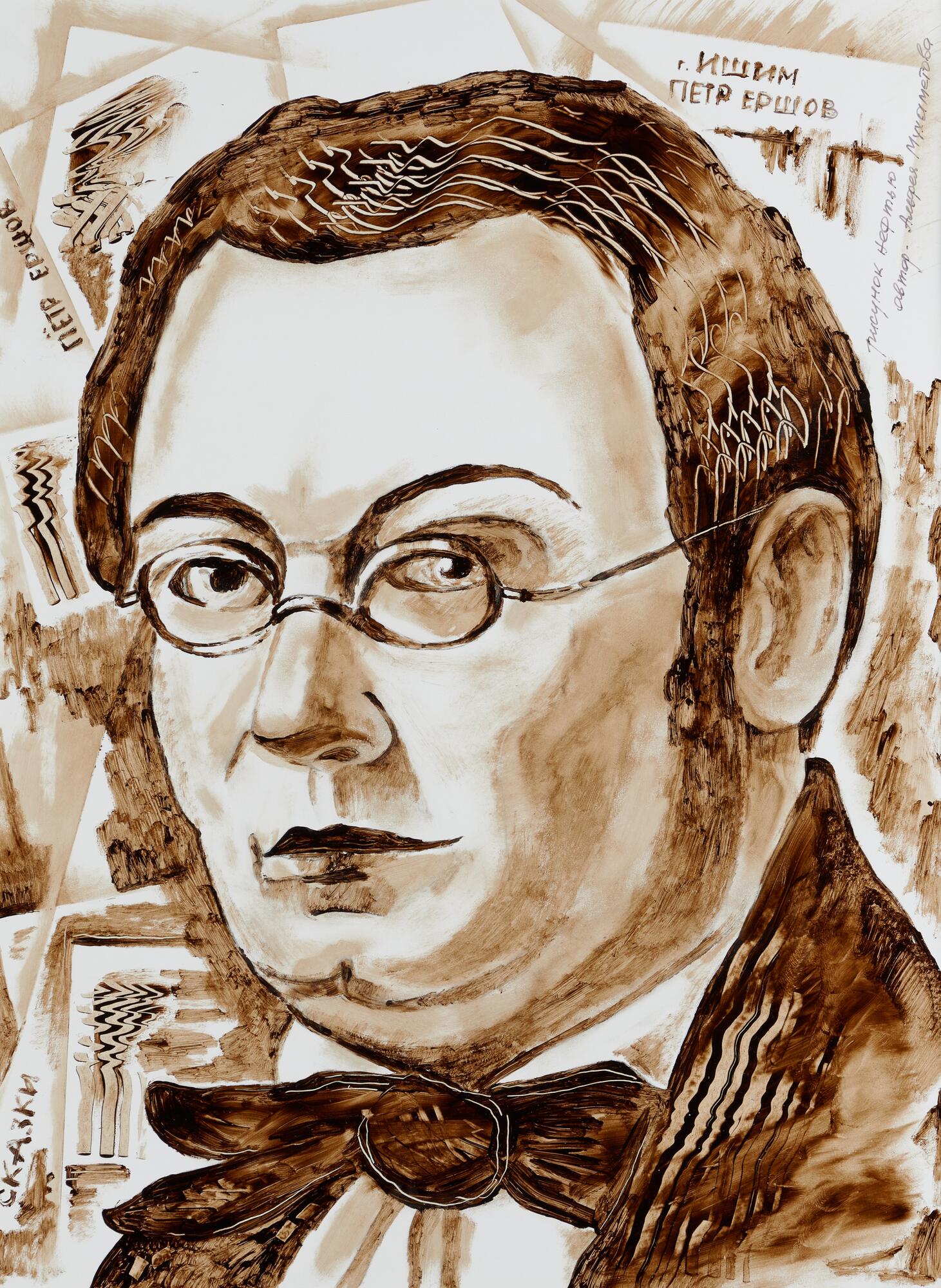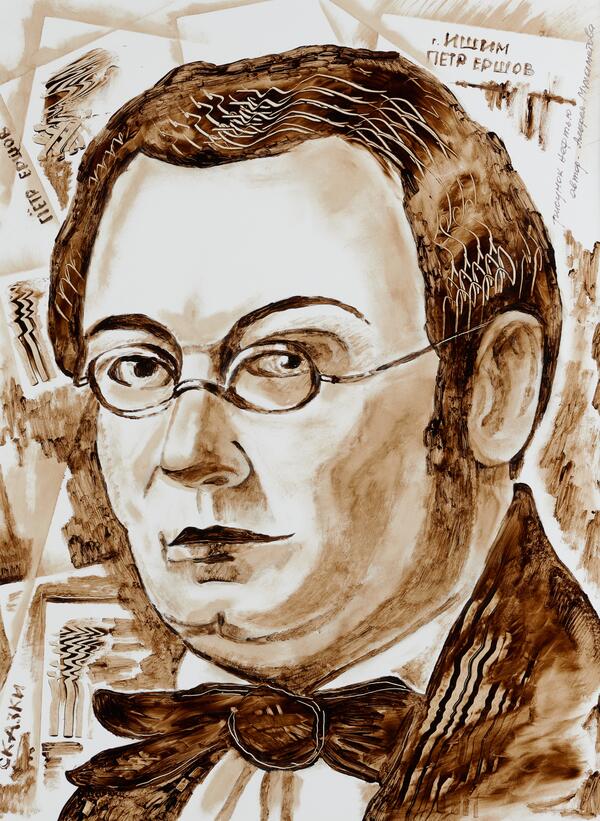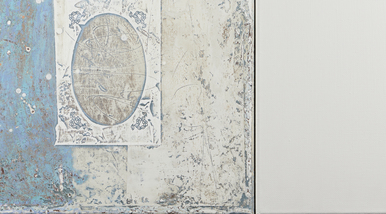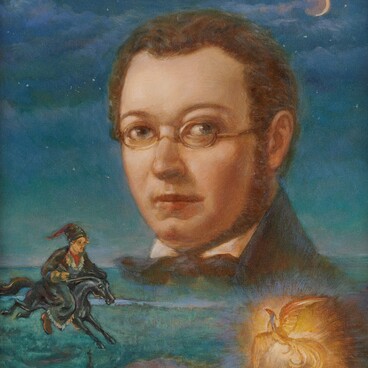Russian poet, novelist, and playwright Pyotr Yershov was born in the Bezrukovo village near Ishim. Yershov returned to the region after studying at St. Petersburg Imperial University. At first, he taught at a Tobolsk gymnasium, then headed it, and later he headed the entire schools' directorate in the Tobolsk governorate. Yershov opened schools for women in several towns, created a Society for supporting the students of the Tobolsk governorate and an amateur theater, where he staged his plays and works by other authors.
The fairy tale ‘Konek-Gorbunok’ (‘The Little Humpbacked Horse’) was written by Yershov during his student years. It was presented to the public for the first time by a literature teacher and literary critic Pyotr Pletnev. An excerpt from the fairy tale was published in the magazine " The Reader’s Library " in 1834, and in the same year, the complete fairy tale was published in a separate edition.
This portrait of Pyotr Yershov was created by an artist and teacher Alfeya Mukhametova. Mukhametova’s works are housed in private collections in Germany, Canada, China, Japan, the USA, as well as in museums of Khanty-Mansiysk, Langepas, Tyumen, Megion, Pokachi, and Tobolsk.
Mukhametova has a special technique — she paints with crude oil on glossy photo paper. She evaporates the oil prior to painting to give it viscosity. The artist uses not only brushes, but she also applies strokes with the pads of her fingers and a palette knife — a special tool with a flexible steel blade. Besides crude oil painting, Alfeya Mukhametova’s techniques include painting on fall leaves, overglaze enameling and silk painting. The portrait of Pyotr Yershov is created in her traditional technique — using oil, boiled in a specific way, a brush, fingers, and a palette knife on glossy photo paper. The artist created this painting for the opening day of her personal exhibition in 2019 at the Yershov Museum Complex of Ishim City.
The writer, as in most of his surviving portraits, has round glasses and a bow tie. When creating the painting, the artist relied on a lifetime portrait made by Nikolay Madzhi. His Yershov’s image is considered the most reliable. In the background, one can see faint outlines of books and manuscripts with inscriptions. The author’s inscription can be seen in the upper right corner.
The fairy tale ‘Konek-Gorbunok’ (‘The Little Humpbacked Horse’) was written by Yershov during his student years. It was presented to the public for the first time by a literature teacher and literary critic Pyotr Pletnev. An excerpt from the fairy tale was published in the magazine " The Reader’s Library " in 1834, and in the same year, the complete fairy tale was published in a separate edition.
This portrait of Pyotr Yershov was created by an artist and teacher Alfeya Mukhametova. Mukhametova’s works are housed in private collections in Germany, Canada, China, Japan, the USA, as well as in museums of Khanty-Mansiysk, Langepas, Tyumen, Megion, Pokachi, and Tobolsk.
Mukhametova has a special technique — she paints with crude oil on glossy photo paper. She evaporates the oil prior to painting to give it viscosity. The artist uses not only brushes, but she also applies strokes with the pads of her fingers and a palette knife — a special tool with a flexible steel blade. Besides crude oil painting, Alfeya Mukhametova’s techniques include painting on fall leaves, overglaze enameling and silk painting. The portrait of Pyotr Yershov is created in her traditional technique — using oil, boiled in a specific way, a brush, fingers, and a palette knife on glossy photo paper. The artist created this painting for the opening day of her personal exhibition in 2019 at the Yershov Museum Complex of Ishim City.
The writer, as in most of his surviving portraits, has round glasses and a bow tie. When creating the painting, the artist relied on a lifetime portrait made by Nikolay Madzhi. His Yershov’s image is considered the most reliable. In the background, one can see faint outlines of books and manuscripts with inscriptions. The author’s inscription can be seen in the upper right corner.



